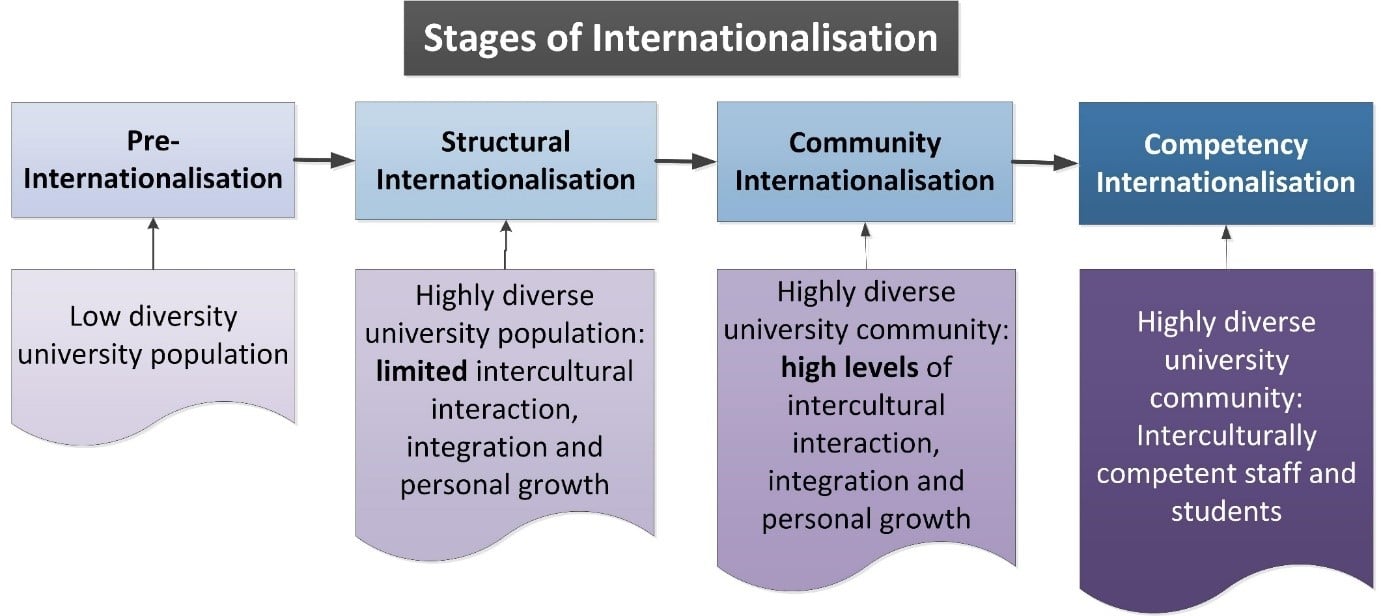Making Universities More Inclusive: How are we doing?
A few years ago, a British Council report on the integration of international students commented that “simply having a diverse student body does not mean the education or even the campus is global in nature. What comes as an essential part of a global education is the inclusion of international students in communities and classes”.
In fact, research has shown that there are numerous benefits of an integrated student population, not just for international students, but for all concerned – for home as well as international students, for staff and student communities, and for the university as a whole. The benefits include the following:
Individual level benefits
- Student well-being
- Study persistence/academic achievement/ learning gain
- Global citizenship attitude
- ‘Global graduate’ skills
Community level benefits
- Group identity and sense of belonging
- Mutual support for peers
- Lower levels of discrimination
University level benefits/risk mitigation
- Positive student experience ratings (and associated rankings)
Yet schemes that rank universities for their level of internationalisation (e.g. THE, QS, U-Multirank) still base them on objectively countable characteristics, such as the proportion of international students and staff, level of incoming and outgoing mobility, and so on. Such elements are important pre-requisite features but are inadequate on their own as they ignore the important issue of the integration of home and international students (and staff) and the benefits that this can bring. Such schemes therefore fail to give credit or recognition to those universities that achieve beyond this. We suggest that a more demanding trajectory of internationalisation could usefully be envisaged.
This raises two fundamental questions:
How can we move from structural internationalisation to community internationalisation and beyond?
Research suggests that it is the responsibility of everyone. Many years ago, in his ground-breaking work on migration in Canada, John Berry pointed out that the successful settlement of migrants is not simply dependent on the attitudes and behaviour of the migrants but is also dependent on the attitudes and behaviour of the host/receiving country, because it always ‘takes two to tango’. The same is true for the effective inclusion of international students. Just as the benefits of integration apply at multiple levels, so there are responsibilities at these multiple levels, for home as well as international students, and for staff and university management too. Suggestions for what this can mean in practice will be outlined in Spencer-Oatey’s case study presentation on 3 April 2019 (see also a forthcoming paper on integration by Spencer-Oatey and Dauber in the Journal of Studies in International Education).
How can university management plan strategically for the greater inclusion and monitor their progress?
We propose that the Global Education Profiler offers a useful source of valuable information. This tool, which places a particular focus on integration and which has student and staff versions, probes diversity issues in two ways: the importance that people attach to the issues and the extent to which they are experiencing them. This allows for a distinction between what people want and what they are experiencing, which is particularly helpful for strategic planning purposes. The tool probes five constructs (social integration, academic integration, foreign language learning, communication skills, and global opportunities and support) and some empirical findings on academic integration will be given in Spencer-Oatey’s case study presentation on 3 April 2019.
For further information in the meantime, see: www.warwick.ac.uk/gep


.jpeg)
